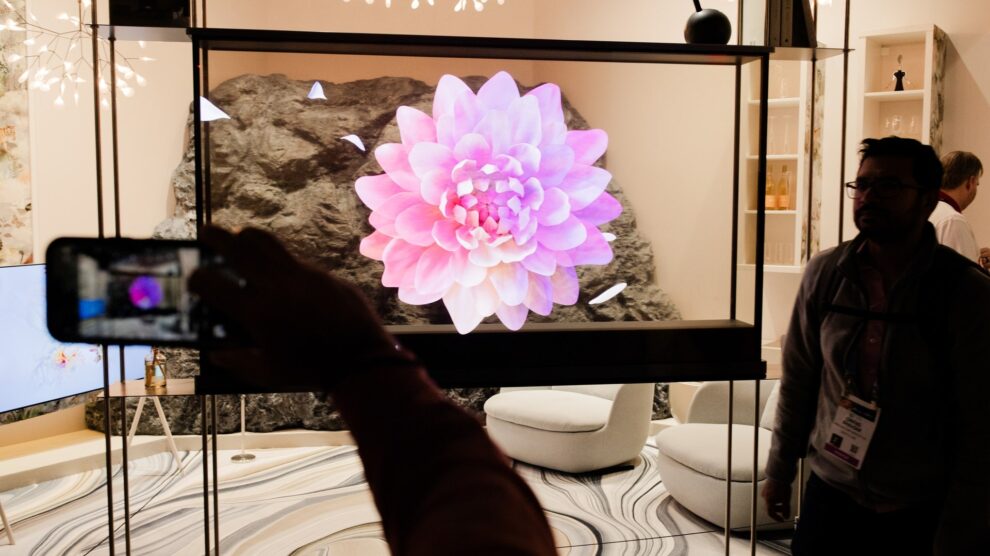The boxy television set evolved smaller, thinner and more vivid across decades gradually. But new display innovation literally evaporates bezels and panels altogether – proposing science fictional screens manifesting the invisible visible defying imagination and interior design conventions alike.
Today we explore early transparent TV technology magic, foreseeable challenges still ahead pioneering mainstream viability and what utopian living room environments look like if far-future technical prowess actualizes affordably.
Early Glimpses of Vanishing Screens
Initial transparent television prototypes like LG and Samsung models publicly previewed so far effectively hide display hardware within panel glass itself using self-illuminating OLEDs generating light pixel-by-pixel.
This allows images shining through the backdrop when active while surfaces appear practically see-through when powered off. Essentially, the TV disappears and reappears conjuring content at your command rather intrusively occupying interior space otherwise.
Bespoke Digital Wallpaper
In this way, home theaters transform showcasing personalized digital wallpaper ENVIRONMENTS matching room paint cues seamlessly rather than tech gadgetry imposed amidst carefully crafted décor statements.
Instead, screens facilitate sophistication celebrating designed unity metaphorically hanging art enables emotional response elicitation. Bold, beautiful OLED artwork manifests space-maximizing functionality simultaneously.
Overcoming Early Adoption Challenges
Alas, transparent panel shortcomings around brightness, viewing angles and costs today likely stall mainstream living room integration short term until technology matures responsively.
Current synthetic content visibility suffers noticeable clarity degradation in daylight or exhibited off-angle. And prices hover 5-10X conventional LED-LCD flatscreen ranges limiting purchases largely commercial installations presently.
But foreseeable light emission efficiencies will brighten prospects sooner over later. And production scales dropping cost curves attract more residential early majority momentum despite trailing ultimate technological ceilings.
The Ethical Challenges of Immersive Technology
Moreover, cultural observers also debate ramifications surrounding increasingly immersive visual content experiences on mental health, personal well-being and social dynamics altering interpersonal relationship equations.
Does ambient cinema nurture pathological escapism avoidance or healthy creative imagination inspired?
We encourage balanced use appreciating emotional amplification possibilities against overindulgence risks realized already perhaps during recent pandemic lockdowns.
The Future of Living Room Minimalism
Once transparent TV barriers erode behind pioneering breakthroughs, their flexibility and seamless ambient styling introduces dramatic living space reinventing makeovers.
Imagine walls broadcasting customizable art morphing rooms adaptable any mood or occasion matching. Or displays concealing connectivity hubs controlling integrated smart homes via voice and gesture sans remote.
The possibilities span vast unlocking multipurpose dynamic room transformations confined only creatively now that bulky boxes no longer dictate furniture flow undermining versatility.
Tomorrow’s Home Theater Sustainability
Environmentally, eliminating resource-intensive rigid encasings benefits also reducing replacement waste as innovations upgrade content rather equipment itself.
Couple energy efficiencies expected reducing power demands and associated carbon emissions and suddenly flatscreens manifest questionable dinosaurs despite recent dominance.
In many ways, the vanishing act TVs now pioneering collapse paradigms welcoming far more customizable, minimalist and ecologically friendly video enjoyment eras fast approaching!










Add Comment